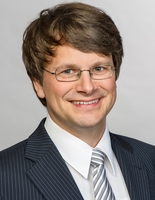Elementarteilchenphysik bei niedrigen Energien
Prof. Bastian Märkisch
Forschungsgebiet
Eine Beschreibung der faszinierenden Forschungsthemen folgt in Kürze. Bis dahin können Sie einen Blick auf die Homepage der Gruppe werfen (siehe Links rechts).
Mitarbeiterinnen und Mitarbeiter der Arbeitsgruppe
Professor
| Photo | Akad. Grad | Vorname | Nachname | Raum | Telefon | |
|---|---|---|---|---|---|---|

|
Prof. Dr. | Bastian | Märkisch | 269 | +49 89 289-14485 |
Sekretariat
| Photo | Akad. Grad | Vorname | Nachname | Raum | Telefon | |
|---|---|---|---|---|---|---|

|
Karin | Frank | 265 | +49 89 289-12572 |
Wissenschaftlerinnen und Wissenschaftler
| Photo | Akad. Grad | Vorname | Nachname | Raum | Telefon | |
|---|---|---|---|---|---|---|

|
M.Sc. | Karina | Bernert | 554 | +49 89 289-12577 | |

|
M.Sc. | Max | Lamparth | 277 | +49 89 289-14429 | |

|
M.Sc. | Manuel | Lebert | – | +49 89-289 12696 | |

|
M.Sc. | Robert | Neagu | 118 | +49 89 289-12489 | |

|
Markus | Trunk | 118 | +49 89 289 13893 |
Studierende
| Photo | Akad. Grad | Vorname | Nachname | Raum | Telefon | |
|---|---|---|---|---|---|---|

|
B.Sc. | Mattis | Bestehorn | – | +49 89 289-14429 | |

|
Luca | Fallböhmer | – | – | ||

|
Mohammad | Miah | – | – | ||

|
Vitus | Past | – | – | ||

|
Jonas | Schlegel | – | – | ||
Andere Mitarbeiterinnen und Mitarbeiter
| Photo | Akad. Grad | Vorname | Nachname | Raum | Telefon | |
|---|---|---|---|---|---|---|

|
Dr. | Jens | Klenke | – | +49 89 289-14771 |
Lehrangebot der Arbeitsgruppe
Lehrveranstaltungen mit Beteiligung der Arbeitsgruppe
Abgeschlossene und laufende Abschlussarbeiten an der Arbeitsgruppe
- Konstruktion und Kalibration eines Elektronenspektrometers
- Abschlussarbeit im Bachelorstudiengang Physik
- Themensteller(in): Bastian Märkisch
- Simulation of Spallation Sources with MCNP and SERPENT2
- Abschlussarbeit im Masterstudiengang Physik (Kern-, Teilchen- und Astrophysik)
- Themensteller(in): Bastian Märkisch